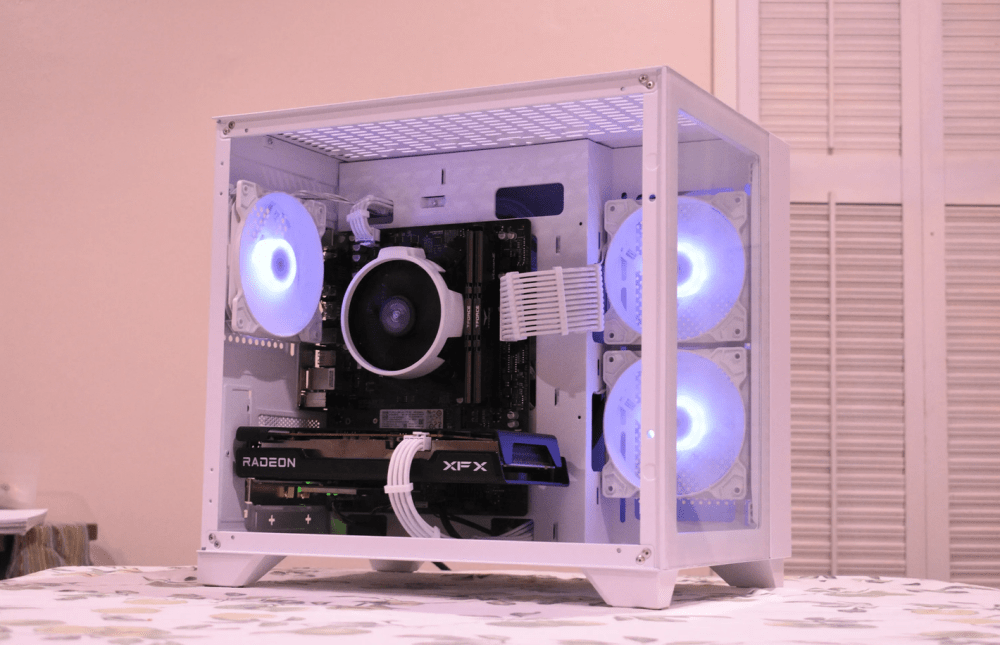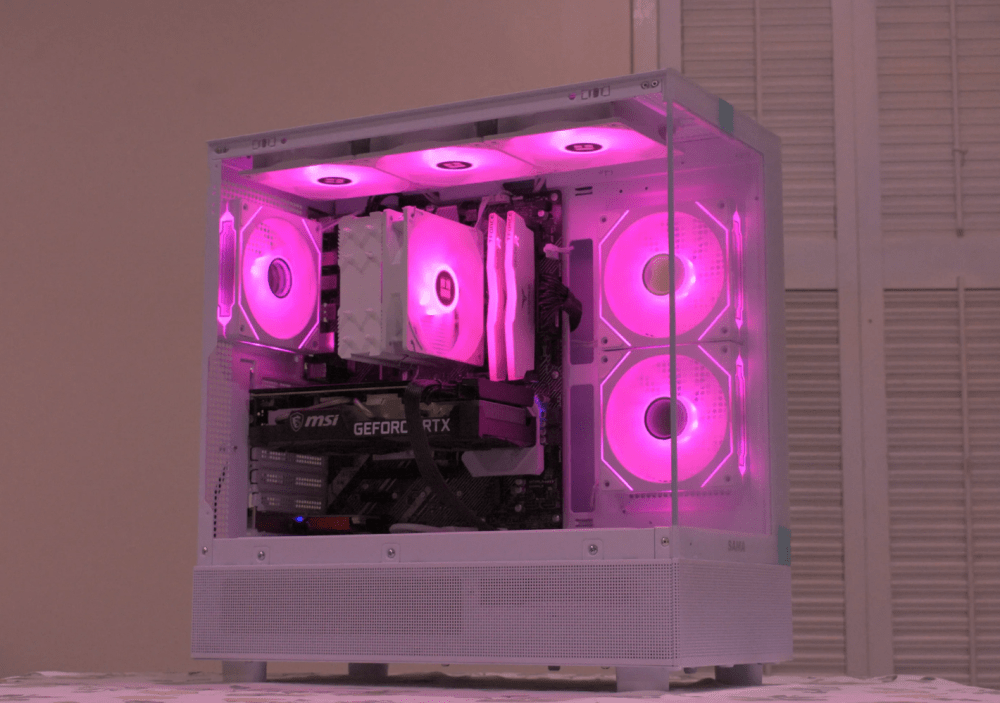Looking to upgrade your CPU? Check out Jawa for killer deals on new and used processors.
Have you ever encountered a situation where your computer's power button suddenly stops working? It can be frustrating, especially when you need to use your CPU urgently. But don't worry, there are alternative methods to turn on your CPU without relying on the power button. In this blog post, we will explore different techniques that you can use to power on your CPU even when the power button fails to function. We will also discuss the importance of the power button, troubleshooting tips, safety precautions, and permanent solutions to fix a non-working power button. So, if you're ready to learn some handy tricks, keep reading to discover how to turn on your CPU without the power button.
Understanding the Basics: The Role of the Power Button and Alternatives
The power button is a crucial component of any computer system, as it serves as the primary means to turn on and off the CPU. When you press the power button, it sends a signal to the motherboard, triggering the startup process and initializing all the hardware components.
But what happens when the power button stops working? In such cases, it's important to understand the alternatives that can be used to power on the CPU. Let's delve deeper into the role of the power button and explore alternative methods that can be employed.
How Power Buttons Work
Power buttons are typically designed as momentary switches. This means that they only make a connection when pressed and immediately break the connection when released. When you press the power button, it completes an electrical circuit, allowing the flow of current from the power supply to the motherboard. This, in turn, initiates the booting process of your computer.
Why Power Buttons May Fail
Several factors can contribute to the failure of a power button. One common reason is physical damage or wear and tear over time. Constant pressing and the accumulation of dirt or debris can cause the button to become unresponsive or malfunction.
Additionally, electronic issues within the power button circuitry or faulty connections can also lead to a non-working power button. In some cases, a power surge or electrical malfunction can affect the functionality of the power button as well.
Troubleshooting a Non-Working Power Button
Before exploring alternative methods, it's essential to troubleshoot the non-working power button to ensure it is not a minor issue that can be easily resolved. Some troubleshooting steps you can take include:
-
Check the power connection: Ensure that the power cable is securely connected to both the power supply unit and the wall socket. Sometimes, a loose connection can cause the power button to appear non-responsive.
-
Inspect for physical damage: Examine the power button for any visible signs of damage, such as cracks or loose components. If you notice any physical issues, it may be necessary to replace the power button.
-
Reset the CMOS: Clearing the CMOS (Complementary Metal-Oxide-Semiconductor) settings on the motherboard can sometimes resolve power-related issues. Refer to your motherboard manual for instructions on how to perform a CMOS reset.
-
Check the power supply unit: Faulty power supply units can cause power button problems. Test the power supply unit using a multimeter or consider replacing it if necessary.
If none of these troubleshooting steps resolve the power button issue, it's time to explore alternative methods to turn on your CPU without relying on the power button.
The Importance of a Power Button
The power button may seem like a small and insignificant component, but its role in the functioning of a computer system cannot be undermined. Let's explore the importance of a power button and why it is crucial for the proper operation of your CPU.
Initiating and Controlling the Power Supply
The primary purpose of the power button is to initiate and control the power supply to the CPU. When you press the power button, it sends a signal to the motherboard, instructing it to start the booting process. The motherboard then activates the power supply unit, which provides the necessary electrical power to all the components of the CPU.
Proper System Shutdown
In addition to powering on the CPU, the power button also plays a vital role in initiating a proper system shutdown. By pressing and holding the power button for a few seconds, you can trigger the shutdown process, allowing the operating system to gracefully close all running applications and safely power off the computer. This helps prevent data loss or potential damage to the system.
Emergency System Reset
The power button also serves as an emergency reset switch. In situations where the computer becomes unresponsive or freezes, pressing and holding the power button for a few seconds can forcibly shut down the system and restart it. This can be useful in resolving certain software or hardware issues that may cause the system to become unresponsive.
User-Friendly Interface
The power button is typically located in a convenient and easily accessible location on the computer chassis. It provides a simple and intuitive method for users to control the power state of their CPU. This user-friendly interface allows individuals to power on or off their systems effortlessly without the need for complex commands or procedures.
Safety and Energy Efficiency
The power button contributes to the safety and energy efficiency of the computer system. By providing a means to easily power off the CPU, it ensures that the system is not left running unnecessarily, reducing energy consumption and minimizing the risk of overheating or electrical hazards.
In summary, the power button is a crucial component that facilitates the proper functioning, control, and safety of your CPU. Its role in initiating the power supply, enabling proper system shutdowns, emergency resets, and providing a user-friendly interface cannot be understated. However, when faced with a non-working power button, it becomes necessary to explore alternative methods to power on your CPU, which we will discuss in the following sections.
Alternative Methods to Power On Your CPU
When the power button on your CPU fails to work, there are alternative methods you can utilize to power on your computer. In this section, we will explore different approaches that can be used as alternatives to the power button. Let's take a closer look at each method:
Using the Motherboard
One of the most straightforward alternative methods is to use the motherboard itself to power on your CPU. Most motherboards have a dedicated power switch or a set of pins that can be shorted to simulate the pressing of the power button. To utilize this method, follow these steps:
-
Locate the power switch pins: Consult your motherboard's manual to identify the specific pins or headers labeled for the power switch. These are typically located near the front panel connectors.
-
Short the power switch pins: Use a small conductive object, such as a screwdriver or a jumper cap, to momentarily connect the two power switch pins. This action will simulate the pressing of the power button and initiate the booting process.
-
Power on the CPU: Once you have shorted the power switch pins, the CPU should start powering on, and the system will begin to boot up.
Using a Secondary Power Switch
Some computer cases or power supply units come equipped with secondary power switches as an additional means to power on the CPU. These switches are typically located on the back of the case or the power supply unit itself. To utilize this method, follow these steps:
-
Locate the secondary power switch: Check the back of your computer case or power supply unit for any additional power switches. They are often labeled as "Power" or "On/Off."
-
Toggle the secondary power switch: Flip the secondary power switch to the "On" position. This action will send a signal to the power supply unit, initiating the booting process of the CPU.
-
Power on the CPU: After toggling the secondary power switch, the CPU should start powering on, and the system will begin the startup sequence.
Using a Screwdriver
If you don't have access to the motherboard's power switch pins or a secondary power switch, another alternative method involves using a screwdriver to manually complete the circuit and power on the CPU. Here's how you can do it:
-
Unplug the power supply: Ensure that the power supply unit is unplugged from the wall socket to avoid any potential electrical hazards.
-
Locate the power switch pins: Similar to the method using the motherboard, you will need to locate the power switch pins on the motherboard. Consult the motherboard's manual for guidance.
-
Prepare the screwdriver: Take a small flat-head screwdriver and hold it with an insulated handle for safety.
-
Short the power switch pins: With the power supply unit unplugged, carefully touch the tip of the screwdriver across the two power switch pins on the motherboard. This will complete the circuit and simulate pressing the power button.
-
Power on the CPU: Once you have successfully shorted the power switch pins, plug the power supply back into the wall socket. The CPU should start powering on, and the system will boot up.
It's important to note that using a screwdriver to power on the CPU is a temporary solution, and it's recommended to seek a permanent fix for the non-working power button.
In the next section, we will discuss the safety precautions to keep in mind when powering on your CPU without a functional power button.
Safety Precautions When Powering On a CPU Without a Power Button
When powering on your CPU without a functional power button, it's crucial to follow certain safety precautions to ensure the safety of both yourself and your computer system. While alternative methods can be used, it's important to handle the components with care and take necessary precautions. Here are some safety measures to keep in mind:
Unplug the Power Supply
Before attempting any alternative method to power on your CPU, always make sure to unplug the power supply from the wall socket. This will prevent any accidental electrical shocks or short circuits while working with the components.
Ensure You are Grounded
Static electricity can damage sensitive computer components. To avoid any static discharge that could harm your computer, it is important to ground yourself before working inside the CPU. You can use an anti-static wrist strap or touch a grounded metal object to discharge any static electricity buildup.
Be Gentle with the Components
When using alternative methods to power on your CPU, it's essential to be gentle while handling the components. Avoid applying excessive force or pressure, as this could potentially damage the motherboard or other delicate hardware components.
Avoid Contact with Exposed Wires or Components
When working inside the CPU, be cautious of any exposed wires or components. Avoid touching them directly to prevent electric shock or unintended damage. If you notice any loose wires or damaged components, it's advisable to seek professional assistance.
Follow Proper Shutdown Procedures
When you need to power off your CPU, it's important to follow proper shutdown procedures. Use the operating system's shut down option or perform a proper system restart through alternative methods. Avoid abruptly cutting off power by unplugging the CPU or using alternative methods to force a shutdown, as this can lead to data loss or potential hardware damage.
Seek Professional Help if Unsure
If you are uncomfortable or unsure about any aspect of powering on your CPU without a functional power button, it is always recommended to seek professional help. Computer technicians or experts can provide guidance and assistance in troubleshooting the power button issue or offer a permanent solution to fix the problem.
By adhering to these safety precautions, you can minimize the risk of damage to your computer system and ensure a safe working environment. In the following section, we will explore permanent solutions to fix a non-working power button and restore the proper functionality of your CPU.
Permanent Solutions to a Non-Working Power Button
While alternative methods can be used to power on your CPU without a functional power button, it's important to find a permanent solution to address the issue. Here are some permanent solutions to consider when dealing with a non-working power button:
Replacing the Power Button
One of the most effective and straightforward solutions is to replace the faulty power button with a new one. This may involve disassembling the computer case to access the power button component on the front panel. You can purchase a replacement power button from computer hardware stores or online retailers. Follow the instructions provided with the new power button or consult a professional if needed.
Seeking Professional Help
If you are not comfortable with replacing the power button yourself or if the issue seems more complex, it's recommended to seek professional assistance. Computer technicians or repair experts have the necessary knowledge and experience to diagnose and fix power button-related problems. They can offer a permanent solution and ensure that your CPU is functioning properly.
Upgrading to a New CPU
In some cases, a non-working power button may be an indication of other underlying issues with your computer system. If your CPU is outdated or experiencing multiple hardware problems, it might be worth considering upgrading to a new CPU. Upgrading to a newer model can not only resolve the power button issue but also provide you with improved performance and functionality.
Before opting for an upgrade, it's important to assess your budget, compatibility with other components, and specific requirements for your computing needs. Research different CPU options available in the market and consult with experts or online forums to make an informed decision.
By implementing one of these permanent solutions, you can ensure that your CPU's power button issue is resolved, and you can enjoy a fully functional computer system.
In conclusion, a non-working power button on your CPU doesn't have to be a major setback. By understanding alternative methods, taking necessary safety precautions, and considering permanent solutions, you can overcome the power button issue and continue using your computer effectively.





